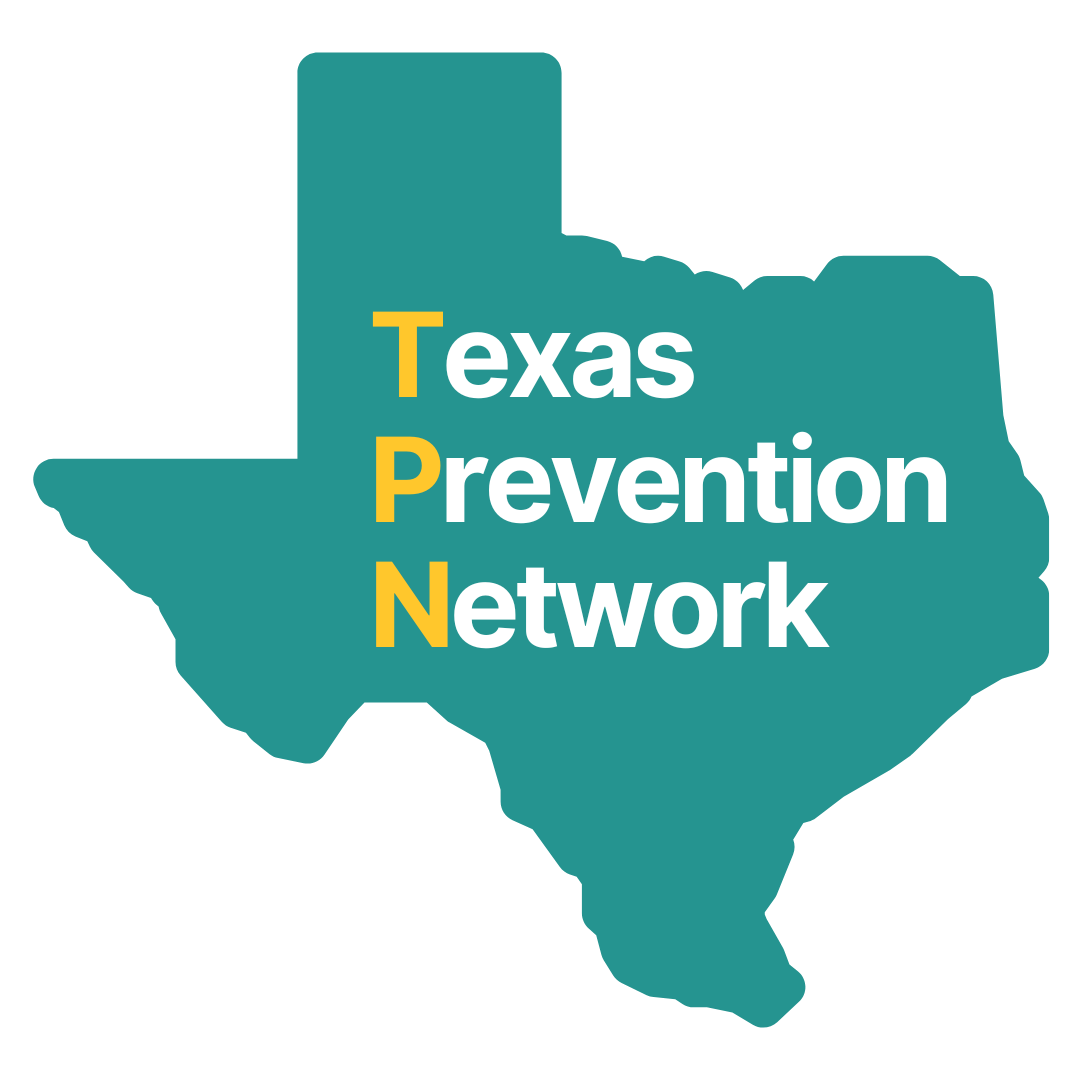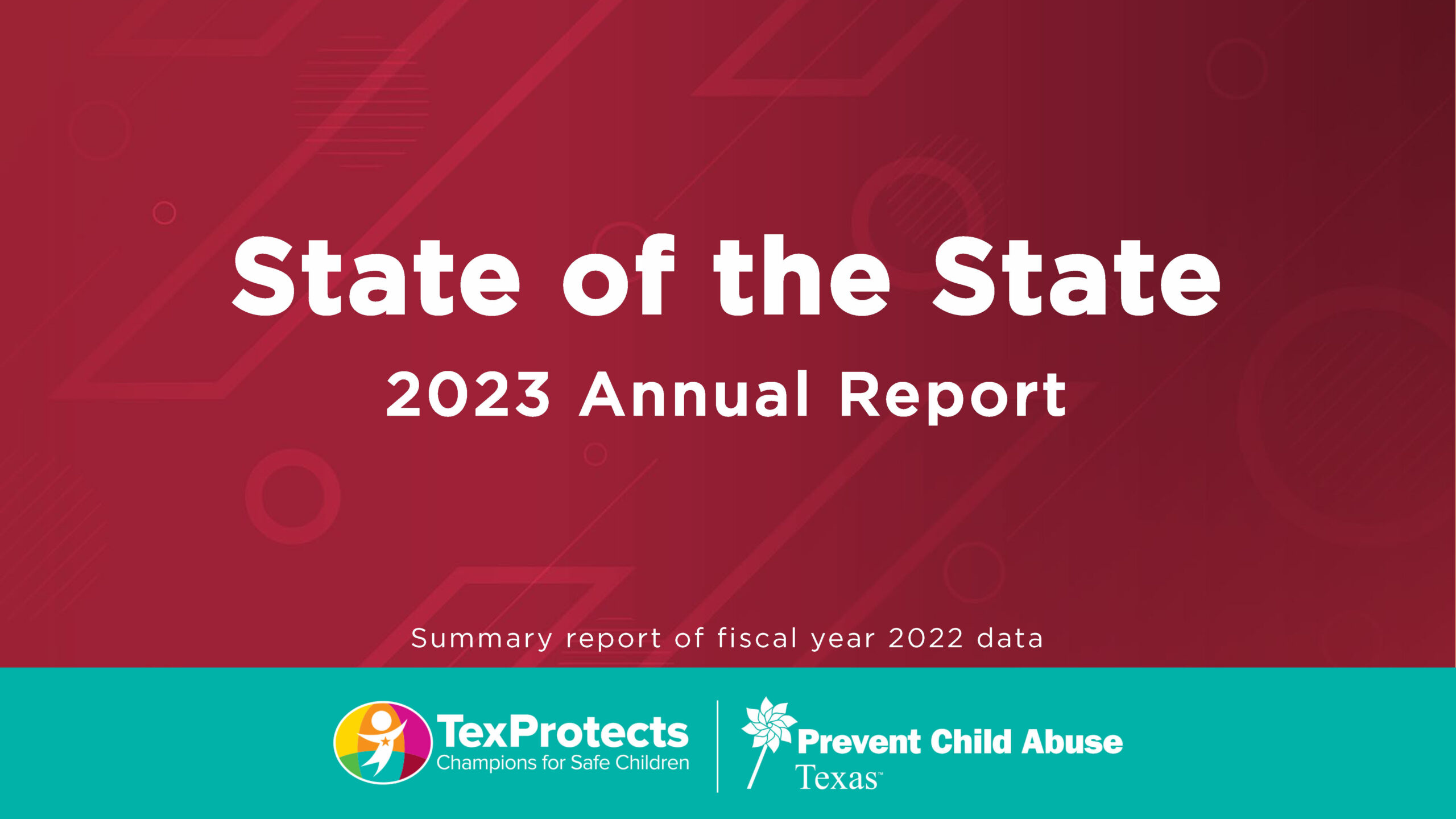Families are often supported by multiple systems and it’s crucial to collaboratively these factors across multiple sectors of society, not just in silos, to effectively strengthen families.
Learn more about the Texas Prevention Ecosystem
Families are often supported by multiple systems and it’s crucial to collaboratively these factors across multiple sectors of society, not just in silos, to effectively strengthen families.
Learn more about the Texas Prevention Ecosystem

Originally established in 2012 as the Texas Home Visiting Consortium, this collaborative network began by bringing together approximately 40 home visiting practitioners from across the state twice a year. Thanks to the generous support of Casey Family Programs, we conducted a survey in late 2023 that revealed a significant interest in expanding the impact and potential of this effort. The survey received 86 responses from providers representing 20 different home visiting programs, compared to the historical participation of 40 providers from 6 programs – proving how excited they were about the opportunity to expand our work together.
In response to this overwhelming enthusiasm, and thanks to the generous support of The Jerry and Emy Lou Baldridge Foundation, we have rebranded and relaunched the Consortium as the Texas Prevention Network. This new name reflects our commitment to inclusivity, encompassing both home visiting and other prevention programs that strengthen and support families.

TexProtects’ annual State of the State presentation highlights data and trends shaping the child protection system in Texas. In 2022, the child protection system continued to face challenges that indicate a need for urgent action to support families and kinship support this 88th Legislative Session.

This 88th Texas legislative session, our team is working on five key areas of child welfare and protection. We are advocating for the funding, delivery, and availability of prevention programs, including kinship support, data transparency, and quality workforce retention. Click here to read in full detail our legislative priorities.
The law that authorizes the bipartisan Maternal, Infant and Early Childhood Home Visiting (MIECHV) program will expire in September 2022. We cannot afford to lose these federal grants to states, territories and tribes that support evidence-based home visiting for families and children from the prenatal period through kindergarten.
The cost of losing this funding will be more children being abused and neglected, more families losing their children, and, in Texas’ already-over-burdened child welfare system, it would exponentially exacerbate the existing crisis.

We pulled together this month’s most noteworthy child welfare research articles for you. Read them all here and take action today!
1. Equitable Supports for Basic Needs of Grandfamilies
“There are 2.6 million children in the U.S. who are living with extended family, inside or outside the child welfare system because their parents cannot care for them. These families are often called “kinship families” or “grandfamilies.” Strong evidence shows children in grandfamilies thrive, especially when they get the support they need. Yet, grandfamilies across the country are not equitably supported.” – Read more from a new report by Generations United.

TexProtects Takeaway: The annual State of Grandfamilies report by Generations United offers a wealth of information on the benefits of kinship care, the needs of kinship families, and available services and policies for these families. While there are known benefits to keeping children within their own families, this report finds that “for every 1 child being raised by kin in foster care, 18 children are being raised by kin outside of foster care.” One way to combat this inequity is to create parity among grandfamilies and promote financial equity by ensuring these families have access to income support, tangible goods/services, and physical and mental health resources. TexProtects has advocated to better support relative caregivers at every stage of the child welfare process and will continue to push for policy changes during the interim leading up to the Texas 88th Legislative Session.
“True primary [child abuse] prevention, which proactively supports the formation and stability of healthy and thriving families, remains an area of much-needed investment.” – New report from the APHSA on Unlocking the Prevention Services in the FFPSA.

TexProtects Takeaway: This new report by the American Public Human Services Association, Unlocking the “Prevention Services” in the Family First Prevention Services Act, offers a series of recommendations on making the FFPSA roll-out effective, efficient, and transformational for the child welfare system. Currently, almost four years since the law was implemented, only 17 states have approved Prevention Plans and have started drawing down federal funding for prevention services (Texas is not included). This report offers recommendations such as amending the prevention services clearinghouse requirements to ensure those with lived experience are informing the services and extending the temporary enhanced federal matching of prevention services through 2023 instead of ending with the public health emergency. In the 87th Texas legislative session, policymakers took steps to implement the FFPSA. HB 3041, by Representative Frank and Senator Kolkhorst, was passed and requires DFPS to create FFPSA pilot prevention programs in two areas of the state focused on children at imminent risk of being removed from their home and placed into conservatorship of the department. Families who participate in these pilot programs will be monitored, and parameters will be in place to ensure that CPS is not involved any longer than necessary. While the location of the pilots and the evidence-based prevention programs have not yet been announced, we are excited about this important step in the implementation of FFPSA in Texas.
3. Texas Department of Family and Protective Services – Disproportionality Report

TexProtects Takeaway: DFPS has taken steps to reduce disproportionalities and disparities in the Texas Child Welfare system, beginning with a 2005 mandate by the Texas Legislature to examine and address racial disproportionality in the state child welfare system and, if found, develop a plan to reduce disparities. The analysis indicated disproportionality existed with African American and Native American children in Texas disproportionately overrepresented in the child welfare system.
Recognizing the importance of cross-system collaboration to address this issue, the state created the HHS Center for the Elimination of Disproportionality and Disparities, later named the Office of Minority Health, Statistics, and Engagement. Within DFPS specifically, they hired a disproportionality manager for CPS, regional specialists, and a state-level disproportionality specialist. In recent years most of these positions were repurposed to various state agencies, and in 2018, the Office of Minority Health, Statistics, and Engagement were defunded and closed in August 2018. Currently, according to the newly released DFPS Disproportionality Report for FY 2020, “all efforts to eliminate disproportionality and disparities in the Texas child welfare system are managed by the CPS state disproportionality manager,” the lone position that remains from the initial efforts, but it has been vacant since May 31, 2021.
While we are disappointed in the defunding of the Office of Minority Health, Statistics, and Engagement, we are grateful for the continued efforts on the part of DFPS to reduce disparities and are excited for the latest announcement of the new disproportionality manager.
The recently released DFPS Disproportionality Report for FY 2020 highlights these continued efforts by DFPS, but unfortunately, the data suggests we have not made large strides in addressing disparities and disproportionalities in the Texas child welfare system. A few important takeaways from the report:
We agree with and support DFPS’ plans for future analysis and recommendations contained in this report. Specifically, we are encouraged by the recommendation for DFPS to “collect better data on income due to the disproportionate number of families of color living in poverty and track these trends.” While we know that living in poverty can be a risk factor for neglect, poverty itself does not equal child neglect. We must work together across systems to ensure families have access to community-level prevention services and support when they need them the most.
*Data and takeaways from the DFPS Disproportionality Report FY 2020.
Get the latest news, reports, and action items delivered right to your inbox here.

We pulled together this month’s most noteworthy child welfare research articles for you. Read them all here and take action today!
A new report released by the US Chamber of Commerce Foundation found that childcare issues in our state result in a loss of $9.39 billion on Texas’s economy annually!

TexProtects Takeaway: A new report released by the US Chamber of Commerce Foundation found that childcare issues in Texas result in an estimated annual loss of $9.39 billion annually to the Texas economy! For more data points on Texas and to read about the implications of barriers to accessing child care, check out the full report. As more families move to Texas for job opportunities and Texans increasingly go back to work, access to high-quality child care will be a necessity.
2. Foster Youth and College Graduation Rates
A recent Chapin Hall study of CA foster youth found that rates of college enrollment and degree attainment among youth who have aged out are increasing. Go here to find out how Tx is supporting foster youth as they prepare to enter adulthood.

TexProtects Takeaway: A recent Chapin Hall study of California foster youth found that a majority of youth were enrolled in college and almost 10% had attained a 2- or 4-year college degree by age 23. These rates of enrollment and degree attainment are generally higher than previous studies of transition-aged youth, and “maybe a result, at least in part, of the investments made in the past two decades in California aimed at increasing college access and persistence for foster youth (for example, extended foster care, ETVs, campus-based support programs, community college tuition fee waivers).” Texas has also made recent strides in supporting older foster youth and ensuring they are prepared to enter into adulthood.
An estimated 1,200 youth in Texas age out of foster care each year. Much older youth who age out are not adequately prepared for adulthood and often face challenges with obtaining a driver’s license, maintaining employment, securing consistent housing, following through on education and maintaining healthcare coverage. As a result, they are more likely to experience homelessness and have untreated mental or physical health issues. The passing of HB 700, passed during the Texas 87th Regular Session, will help to remove barriers and provide supports that can best ensure these young adults have every opportunity to succeed. HB 700, championed by Reps Jarvis Johnson, James Frank, Ray Lopez and Senator Judith Zaffirini, ensures foster youth who complete Preparation for Adult Living classes are eligible to receive college credit, helping them to lock in their tuition and fee waiver for state colleges. Hopefully, this policy change will support more transition-aged youth in continuing their education.
Department of Family Protective Services Resource Page.
The passage of Build Back Better would mean increased access to preventive services for our youngest Texans, saving lives and dollars in downstream costs for the state. The Hunt Institute has created a helpful guide to understand the transformational policies included in BBB. Check it out!
Get the latest news, reports, and action items delivered right to your inbox, here.

We pulled together this month’s most noteworthy child welfare research articles for you. Read them all here and take action today!
A recent study from the Community Partnership Family Resource Center (FRC) found that a community in Colorado experienced a 63% reduction in the rate of child abuse after a Family Resource Center was established in the community.

TexProtects Takeaway: In August 2021, the Texas Department of Family and Protective Services (DFPS) announced the awarding of five grants, totaling over $1 million each, to community organizations across the state of Texas. These grants to communities will assist in the creation of Family Resource Centers (FRCs) in Cameron, Harris, El Paso, Hidalgo, and Travis counties. FRCs are designed to be one-stop centers of community support, connecting families to a range of support services such as housing, employment, concrete services, parenting support groups, child development classes and more. The creation of FRCs in Texas is part of a multi-year plan by DFPS to prevent child abuse and neglect in Texas.
FRCs are already established in many states with positive outcomes for children and families. A recent study published by the Community Partnership Family Resource Center in Teller, Colorado, found that that a community in Colorado experienced a 63% reduction in the rate of child abuse over a 3-year period after a Family Resource Center was established in the community. The study concluded, “FRCs play a key role in preventing child abuse and neglect.” The findings also indicated savings to the county child welfare system of $2.92 for every $1 invested in the FRC. TexProtects is excited to see Texas invest in FRCs across the state that will connect families to necessary resources and help in the prevention of child abuse and neglect.
2. How are Texas families using their Child Tax Credit payments? (Social Policy Institute at the Washington University of St. Louis)
While the deadline to enroll in the advance #ChildTaxCredit has passed, families are still able to claim their full Child Tax Credit when filing taxes in 2022. Check out this fact sheet to see how Texas families and children have benefited from this lifeline!

TexProtects Takeaway: A recent fact sheet published by the Social Policy Institute at the Washington University of St. Louis reveals the temporary expansion of the Child Tax Credit (CTC) is projected to cut American child poverty by more than half. This tax credit expansion provides families with $3,600 for every child in the household under the age of six, and $3,000 for every child between the ages of six and 17. This study found that “the vast majority of U.S. families with children are eligible for the CTC” and “almost two-thirds of eligible TX families received the CTC.”
How did Texas families use this extra support? The study found Texans utilized this extra income to purchase food for their families, pay their bills, pay for school expenses, and to purchase clothing or other essential items for their children. The study also found that families who were eligible for the tax credit “experienced lower rates of severe food insecurity” after the payments were sent out. Now all eyes are on the Build Back Better Act, a federal reconciliation package, which if signed into law would include a permanent extension of the child tax credit, lifting even more Texas children out of poverty!
Get the latest news, reports, and action items delivered right to your inbox, here.

We pulled together this month’s 8 most noteworthy child welfare research articles for you. Read them all here and take action today!
According to the National Research Center on Hispanic Children & Families, one year into the COVID-19 pandemic, roughly 40 percent of Latino and Black households with children who rent or have a mortgage reported housing insecurity. Roughly half of low-income Latino and Black households with children, and one third of low-income White households with children, reported little or no confidence in their ability to make their next mortgage or rent payment.

TexProtects Takeaway: The COVID-19 pandemic continues to disproportionately effect communities of color. This new data reveals that 40% of Latino and Black households with children are facing housing insecurity vs. 15% of comparable white households. With the recent expiration of the federal moratorium on evictions, many families may now be facing homelessness elevating the risk of child maltreatment. In order to ensure these families and children have secure housing, we must advocate for the American Rescue Plan Act funding (over $40 billion in housing assistance) to be released to the communities that need it most.
2. School-Based Strategies for Addressing the Mental Health and Well-Being of Youth in the Wake of COVID-19* (National Academies of Sciences, Engineering, and Medicine)
According to the National Academies of Sciences, Engineering and Medicine, there are evidence-based strategies for schools to address the mental health and well-being challenges among youth that arose or were exacerbated during the COVID-19 pandemic. *This PDF is free but does require creating an account with a valid e-mail address for access.

TexProtects Takeaway: The COVID-19 pandemic has been especially challenging for youth. From the loss of loved ones to loneliness and social isolation, these past 18 months have brought about a unique set of challenges. This new resource identifies strategies to address youth mental health and well-being in the school setting. A few examples include school-wide, mental health screenings and school-based health centers with mental health providers.
3. System Transformation to Support Child & Family Well-Being: The Central Role of Economic & Concrete Supports (Chapin Hall at University of Chicago)
Researchers at the University of Chicago have recently released this overview of policy, programmatic, analytic, and engagement strategies for leveraging economic supports to promote child and family well-being and prevent maltreatment.

TexProtects Takeaway: We know that financial supports reduce child abuse and neglect by enabling families to better access resources and address their own basic needs. The Centers for Disease Control identifies strengthening economic supports to families as one of their strategies to prevent child abuse and neglect. This brief highlights a similar advocacy strategy often championed by TexProtects – that it is best to intervene with a family before a crisis. The recent Child Tax Credit implemented through the American Rescue Plan Act has the potential to dramatically reduce child poverty by giving families access to economic supports on a monthly basis. It would be beneficial for families and children if this tax credit was made permanent.
4. Contact with Child Protective Services is pervasive but unequally distributed by race and ethnicity in large US counties (Edwards, F., Wakefield, S., Healy, K., & Wildeman, C.)
A new study provides county-level estimates of the prevalence of child abuse and neglect in Texas analyzing specifically by race and ethnicity and associated access to prevention and early intervention. A blog post from Duke University discusses the study results in further detail.

TexProtects Takeaway: This study examined CPS data at the county level, revealing the wide range of experiences families face when encountering the child welfare system. Across all counties examined, Black children had the highest risk of CPS investigation and higher rates of later-stage CPS contact (including foster care placements and termination of parental rights). Overall, this study revealed what we already know to be true of our current, often discriminatory child welfare system: risk of involvement in the CPS system is more common for children from historically and/or economically marginalized populations. We must confront these inequalities and continue to work to eliminate disparities at all levels of the child welfare system.
5. Effect of a Universal Postpartum Nurse Home Visiting Program on Child Maltreatment and Emergency Medical Care at 5 Years of Age (Goodman, W.B., Dodge, K., & Bai, Y.)
A recent study concluded that Family Connects, a universal newborn nurse home visiting program, resulted in a 33% decrease in reported cases to CPS and a 39% reduction in emergency medical care use through age 5.

TexProtects Takeaway: This new randomized control trial reveals exciting and promising outcomes for universal postpartum nurse home visiting programs, such as Family Connects. The Family Connects program is a universally offered nurse home visiting program offered to new caregivers. There are six counties in Texas currently operating Family Connects programs. These programs served more than 1,800 Texas families in 2020. To learn more about Family Connects and how TexProtects advocated to expand the program in the 87th legislative session, check out our newly released End of Session report.
6. GrandFacts State Fact Sheets (Casey Family Programs, American Bar Association, & Generations United)
These fact sheets provide data on public benefits, educational assistance, legal relationship options and state laws and Texas’s fact sheet can be found here.

TexProtects Takeaway: 266,337 grandparents are caring for their grandchildren in Texas. Children belong with their families, whenever safely possible. However, not all families have access to the necessary resources to care for additional children. This helpful fact sheet offers grand families a list of resources in Texas including parenting classes, counseling, and food/clothing assistance.
7. Evaluation of a statewide initiative to reduce expulsion of young children (Edge, N., Kyzer, A., Abney, A., Freshwater, A., Sutton, M., & Whitman, K.)
This program evaluation study describes 3 years of implementation of Arkansas’s BehaviorHelp (BH) system, a statewide expulsion prevention support system for early care and education (ECE). The study examined correlation of differences in characteristics including exposure to trauma for children by outcomes including expulsion.

TexProtects Takeaway: The state of Arkansas has launched a statewide effort to reduce suspension and expulsion of young children. Not surprisingly, this study identified children most at-risk for expulsion from school had a history of childhood trauma. We know a child’s reaction to trauma can greatly affect their ability to engage productively in the classroom. Trauma-informed training for all educators is essential to helping children with a history of trauma feel safe and secure in the school setting. Texas requires new teachers to receive trauma-informed care training as part of their orientation, however, a bill passed in the 87th legislative session removes the frequency requirements for trauma-informed care training of current teachers. Texas has a long way to go in ensuring children feel safe and secure in the classroom. A report by Texans Care for Children in 2019 revealed that although the legislature has banned out of school suspensions for pre-k through second graders, a high number of Texas’ youngest students continue to face in-school suspensions at disproportionate rates (highest among students in foster care, special education, and black students and boys).
8. Why aren’t kids a policy priority? The cultural mindsets and attitudes that keep kids off the public agenda (Frameworks Institute)
This report by Frameworks institute explores the cultural barriers to prioritizing children in policymaking, as well as the opportunity to develop a new narrative that is asset focused on child wellbeing instead of child need.

TexProtects Takeaway: When the public thinks about children and policy, they most often think about education and family settings. The public struggles to connect other policy areas (healthcare, housing, etc.) to children’s issues. The Prenatal to Three Collaborative (led in part by TexProtects) works to elevate all policy issues that affect our youngest children. Policies recently in the news such as Medicaid Expansion, the Child Tax Credit, and the federal moratorium on eviction, all have a profound impact on children of all ages and their safety and well-being. In order to help the public make this connection, advocates must be open to new ways of thinking and communicating to better serve our youngest Texans.
Get the latest news, reports, and action items delivered right to your inbox, here.